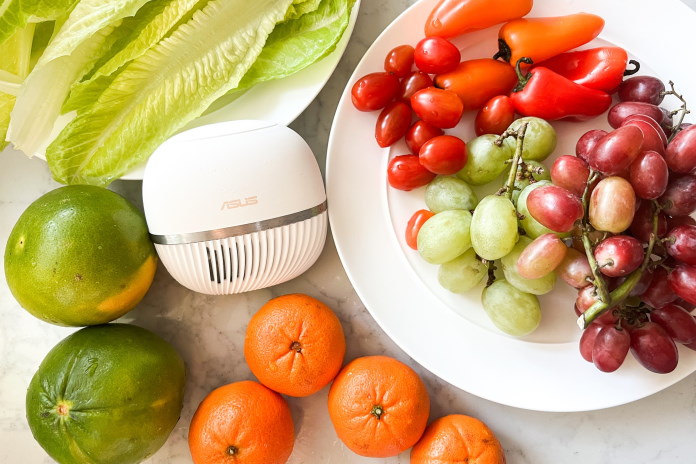From HowLiving
I am a person who is allergic to pesticides and many chemicals. When I eat fruit and vegetables that are not washed clean, my mouth and tongue will break out and I develop a fever. Therefore, I usually only eat organic foods. But it’s not always easy to wash my produce thoroughly without wasting water. That’s where the ASUS PureGo PD100 comes in. It uses high-tech optics to accurately detect residual impurities, including pesticides and contaminants on vegetables and fruits. It can monitor and log the process of washing vegetables so that I can understand the cleanliness of various fruits and vegetables and even compare purchase sources. And best of all, the PureGo saves time and water.
For a limited time, you can purchase your own ASUS PureGo for $40 off its list price. To take advantage of this special offer, use the promo code PUREGO2021 at the ASUS store.
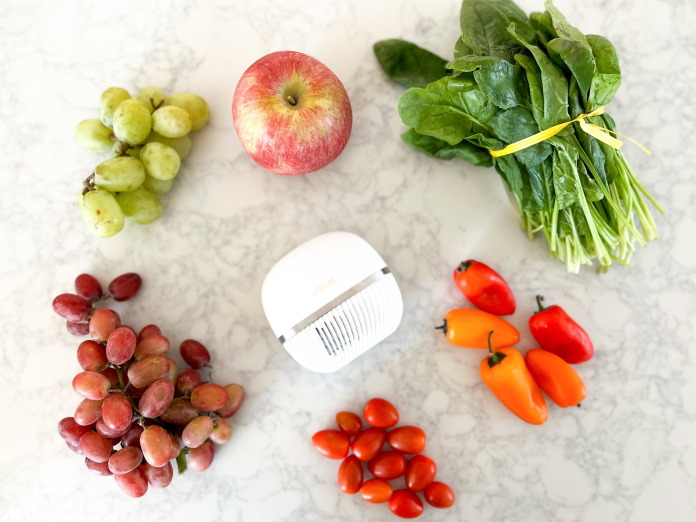
PureGo’s appearance is very beautiful and textured. The white egg-shaped shell is completely waterproof, and it has a streamlined appearance with a pebbled texture. The exterior is made of food-grade liquid silicone rubber. The length, width and height are only 10.2 x 9.8 x 4.7cm, which is smaller than the palm of my hand.
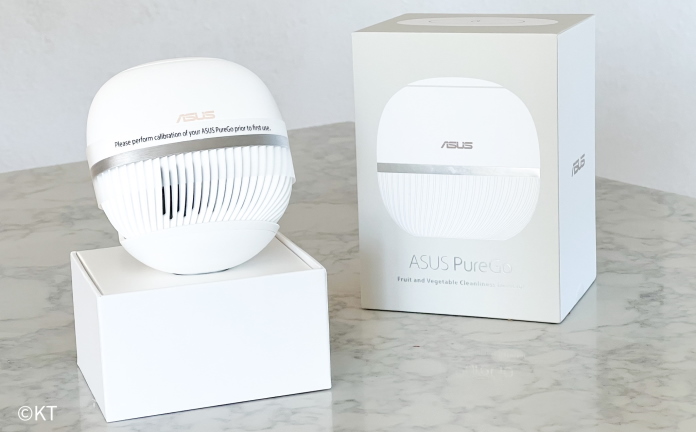
The accessories also have a practical yet elegant design. PureGo has a wireless charging stand, a quick use guide, and a warranty card. The wireless charging stand makes topping off the battery effortless, and the device can be used for six hours when it is fully charged.

The PureGo can be used as a stand-alone device, but the free ASUS PureGo app unlocks its full features. Both Android and IOS versions are available. Just search for “ASUS PureGo” in the App Store or the Google Play store to find the app.
First time setup and use
To start, press and hold the button at the top of the device for more than five seconds until the blue iris goes out and a single blue light appears. The device will start to search for a connected smartphone automatically. Then, the ASUS PureGo app will connect to your phone via Bluetooth.

Regardless of whether you are using the app, you need to calibrate the PureGo the first time you use the machine. Place it in clean water before calibration. The water must be higher than the belt. Press and hold the button for 1.5 seconds, and the blue ring light will flash to indicate that calibration has started. Alternatively, you can use the app to start calibration. Due to the differences in water quality from different sources or during different seasons, it is recommended to perform the calibration function again in 1-2 months to ensure accuracy. Between these periodic calibrations, you can simply place the PureGo in water and it will automatically start up.
To make the most of the PureGo’s features, I always soak first, then wash, and finally cut the produce. For fruits and vegetables, I first use clean water to gently clean the surface and root sediment before soaking them in clean water for two to three minutes to dissolve the pesticides and other residual substances in the water. The PureGo intelligently detects when it’s placed in water—no button is needed during the soaking period.

After the initial soak, use running water to wash away any impurities on the surfaces of your fruits and vegetables. I use a thin stream of water or change the vegetable washing water to let PureGo continuously detect the washing process. The PureGo will flash a red light to indicate the presence of impurities, and a green light to indicate that the water is clean. If you’re using the app, it will record the cleanliness of the water over time.
After the washing is clean, PureGo will emit a green light, and the app will send a notification. At this time, you can press “washing ended” in the app, and the system will automatically record it in the washing log. You can also change the name of the washed vegetables yourself.
Proven cleanliness
I bought many kinds of fruits and vegetables for try out with the ASUS PureGo, and found that it can save a lot of water. The PureGo completely changed my original way of washing vegetables, and also gave me a new understanding of the proper washing methods for various fruits and vegetables. I feel like I have become a professional washing expert. Here’s what I learned about a selection of fruits and vegetables.
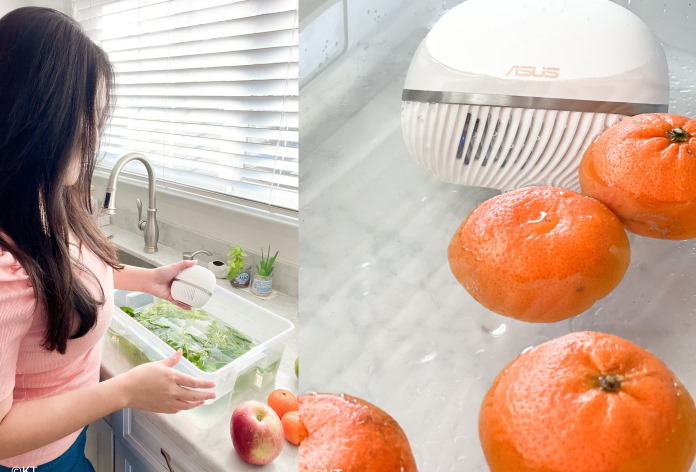
I soaked organic apples, sweet peppers, tomatoes, and grapefruit for one minute and then rinsed them gently with running water. They were very clean.
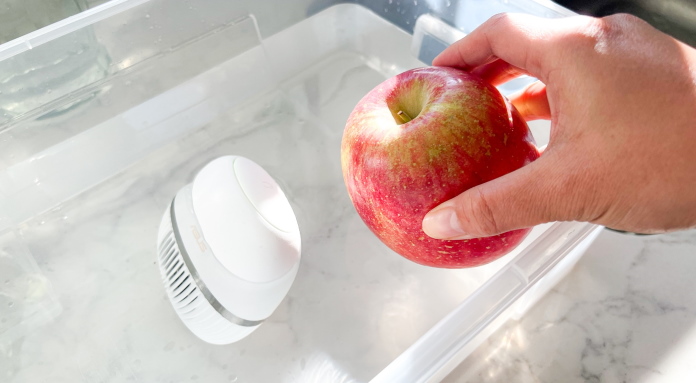
The grapes and oranges took a little longer. They soaked for three minutes, and I needed to change the water once before they were clean. There may be more dust on these fruits.
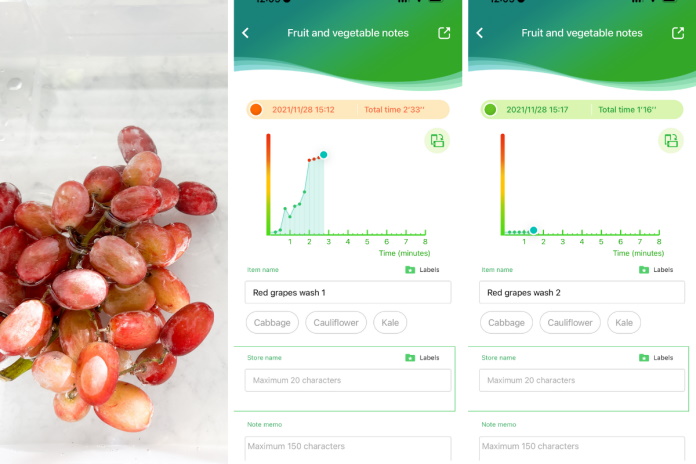
Since spinach has silt at its roots, it needs to be rinsed and then soaked. After changing the water three times, the produce was thoroughly washed and clean.
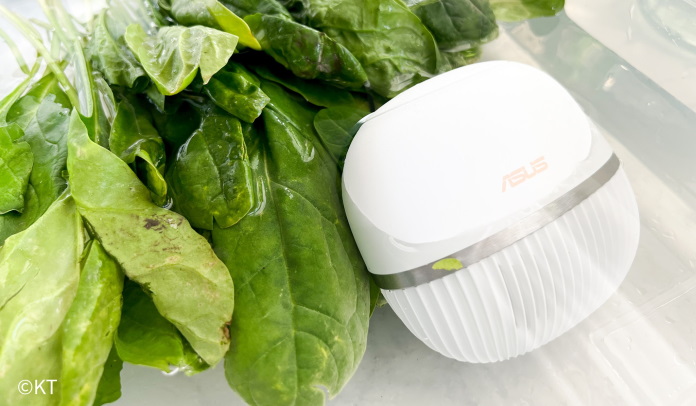
One advantage of the washing log is that it lets you compare the produce from different stores. If you buy the same fruits and vegetables in different supermarkets, you can compare the test results. In other words, this allows you to have more scientific data comparing the fresh fruits and vegetables from different supermarkets so that you can choose better and safer ingredients.
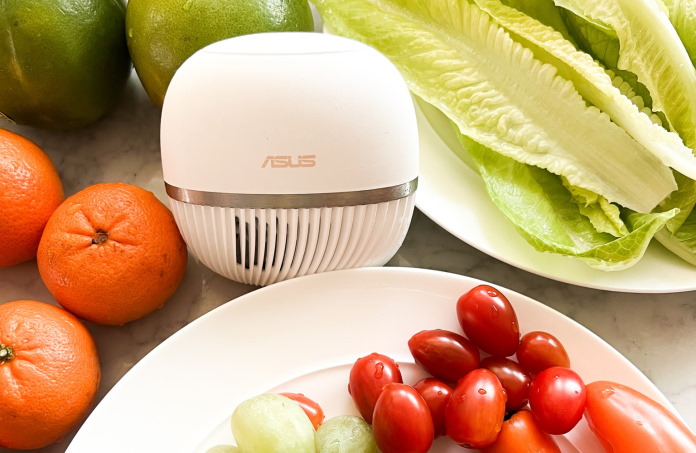
Some fruits and vegetables contain a large amount of phytochemicals (chlorophyll or anthocyanin) or plant spores, which will be released in large quantities during the washing process and affect the test results. Therefore, some fruits and vegetables are not suitable for PureGo washing detection.
Next-gen tech for healthy living
Due to my pesticide allergies, washing produce used to be a time-intensive process that used a lot of water. With the ASUS PureGo PD100, that’s all changed. This easy-to-use device accurately and quickly detects the presence of pollutants and chemicals, letting me prepare foods that are truly clean.
If you’re looking for a device that your whole family can use to ensure the safety of your fruits and vegetables, get an ASUS PureGo PD100 of your own today.

